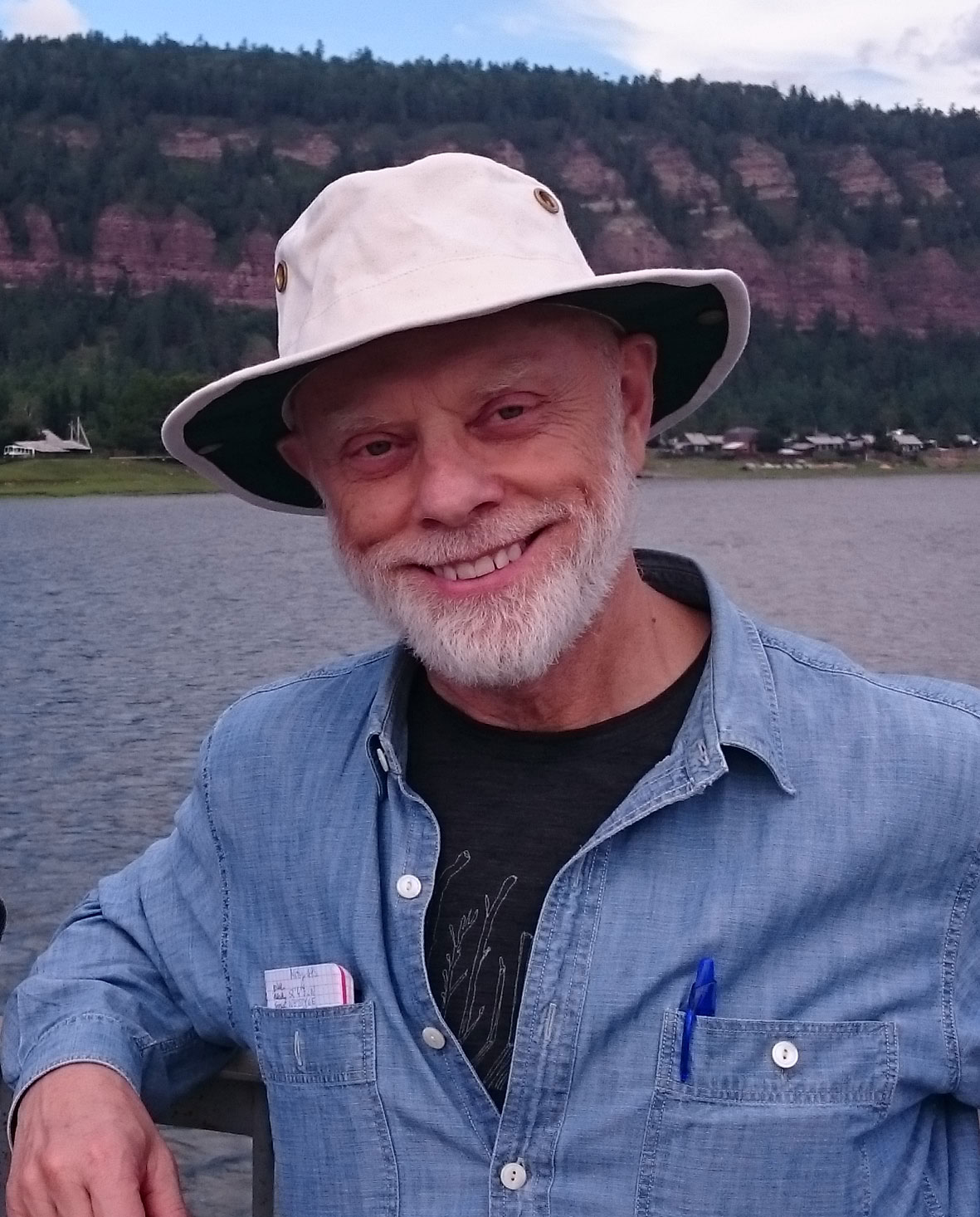
Faculty of Arts' archaeologist Andrzej Weber in Moty-Shamanka, on the Irkut River, Siberia. Photo: Olga Goriunova
The radiocarbon dating of bones for archaeological research is not an exact science. Inaccuracies may occur due to contamination and other influences that make establishing an exact chronology difficult.
For archaeologist Andrzej Weber, this is particularly problematic. He and his research team are studying hunter-gatherer cultures in the Lake Baikal region of Siberia, Russia. These groups are unique because unlike most hunter-gatherers of this time period (8300 to 3700 BP), they buried their dead century after century. Typically, hunter-gatherer cultures are very mobile, disposing of their dead wherever they happen to die, so the richness of human skeletal remains in one location presents an opportunity for researchers like Weber to do a deep dive into the life histories of individuals and their family members. One of the challenges, however, is placing the bones in their proper chronological order and context.
After decades of research, a breakthrough came in 2013/14 when the team discovered that centuries of human skeletal remains had been subject to what scientific literature refers to as the old carbon reservoir effect.
"There are pockets of old carbon stored in geological formations," explains Weber. "If it dissolves from these geological formations and enters water, fresh water, then through diet it also enters human bones and affects radiocarbon dating. Simply put, the more aquatic food one eats, the older the radiocarbon dates look relative to the real historical age. We discovered this first from comparing dates from terrestrial animals that don't eat aquatic food at all such as roe or red deer to the dates on seal bones from the lake. Seals only aquatic food and they always show up on radiocarbon dating as much older than the dates on deer bones."
Moreover, with additional tests they were able to develop a mathematical equation to correct the effect of old carbon stored in fresh waters and fresh water foods. The results were dramatic.
"We were able to place entire collections of human skeletons into a proper historical sequence and also align it with the history of environmental and climatic changes," he says. "Prior to this, the human and climatic/environmental sequences just didn't align properly. It was off not just by 50 years but maybe as much as 500-700 years."
With the addition of a new seven-year SSHRC Partnership Grant in 2018 [Individual life histories in long-term culture change: Holocene hunter-gatherers in Northern Eurasia], Weber and his team will "build on the shoulders" of the results provided by the discovery of the old carbon reservoir effect to better understand the changes experienced by people over the course of hundreds of thousands of years.
"Every individual life history has the potential to provide important information," says Weber. "Evolution is all about variation. If everyone is the same things don't change. Women, men, and children all make decisions with regard to their life. Sometimes they make the same decisions, but sometimes they don't; some are more successful, some less. By looking at this, we can understand individual human variation and by the same token, we can better understand the mechanism of change. And now that we finally have these individuals in their proper historical sequence we are in the position to reconstruct properly the processes of culture change, not only at the boundaries between archaeological cultures and periods, but also within."
Since arriving in Canada from Poland as a University of Alberta post-doctoral fellow in 1989, Weber's research has been singularly focused on hunter-gatherer cultures, primarily of the boreal zone, but also in Hokkaido, Japan, where large deposits of Holocene-era human skeletal remains can also be found. It's a niche field. As he explains it, the majority of hunter-gatherer research falls into three areas of study: the Pleistocene era dating from 2.6 million years to 11,700 years ago which saw Homo sapiens evolve and move out of Africa; the transition from a primordial lifestyle dependent on wild animals and plants to farming and the animal domestication; and finally, the interaction between so-called advanced cultures and hunter-gatherer communities.
The hunter-gatherers that he and his team study, however, never transitioned from their foraging lifestyle, and had little to no contact with advanced civilizations. And yet, according to Weber, the Baikal region of Siberia is providing examples of cultural change that appear to be very dynamic, very complex, very diverse, but don't subscribe to these three main research streams. It presents a unique challenge and opportunity for Weber's multi-national research group, who have worked for two decades to fill the knowledge gap in this area of archaeological research. It is work that has been recognized with three SSHRC MCRIs (Major Collaborative Research Initiatives) and one SSHRC Partnership Grant - unprecedented in the Faculty of Arts.
"We finally enter the stage in our research where we are delivering on the potentials inherent in these materials but it took 20 years to get here," he explains. "This demonstrates how important it is to stick to your guns, to stick to your research agenda, your partnerships. We've gone through difficult times, but these collaborations survived and only got stronger. Without the commitment of my Russian colleagues and my western researchers, we wouldn't be able to make these discoveries."
Weber says curiosity drives his research, adding that by working on both the genetic and the cultural ancestry of these hunter-gatherer groups, it is a way of resurrecting peoples that eventually disappeared.
"Though they didn't leave any written record - only an archaeological record, we make these people part of our daily lives. We are making them, again, part of the human story."
Read more about the Lake Baikal-Hokkaido Archaeology Project here.